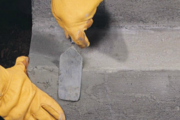Ways To Tell If A Concrete Crack Is Structural In Lemon Grove

- If the crack appears in a foundation wall or other load-bearing area, it could be structural. It is also important to note if the crack runs through columns, walls and other structural supports.
- Look for patterns in the crack such as steps, stair-steps, or zigzag shapes. These can indicate a more serious problem than a single straight line.
- Pay attention to the size of the crack; large cracks can be indicative of a structural issue. If you notice that one side of the concrete is sagging or sloping, this may also be an indication of a structural problem.
- If you can see any bowing in foundation walls or other load-bearing areas of your home then it could be due to shifting soil beneath them and might suggest a structural crack.
- If the concrete is near a water source, such as a pool or pond, you may be able to tell if it’s structural by the amount of water damage around it. Structural cracks will often cause water seepage and infiltration into the home or building.
- These are indicative of settling soil beneath your foundation and can indicate a potential structural problem.
- If your area has experienced an earthquake or other seismic activity, then this could have caused fractures in the ground that lead to structural cracks in your concrete. This type of crack will often appear suddenly after an event like this and should be checked out immediately.
FAQ’s
What Is Considered A Hairline Crack In Concrete?
A hairline crack is considered to be any crack that is less than a quarter of an inch wide.
What Do Foundational Cracks Look Like?
Foundational cracks can vary in appearance, but they are often jagged and zig-zag shaped. They can also be stair-step or have a pattern that suggests settling beneath the foundation.
What Should I Do If I Find Structural Cracks In My Concrete?
If you find structural cracks in your concrete, it is important to contact a professional right away for an assessment and repair. Structural issues with your concrete can lead to further damage if not taken care of immediately.
Conclusion
Understanding the difference between structural and non-structural cracks in concrete is essential for determining a course of action. Paying attention to location, patterns, size, bowing walls, water damage, stair-step cracks, and seismic activity are all important ways to tell if a crack is structural or not. For more information, contact Concrete Contractor Lemon Grove at (619) 648-5335.

